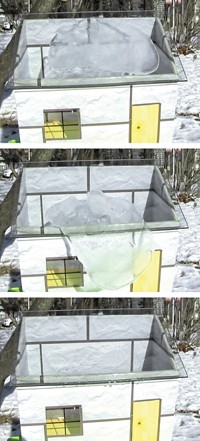Advertisement
Grab your lab coat. Let's get started
Welcome!
Welcome!
Create an account below to get 6 C&EN articles per month, receive newsletters and more - all free.
It seems this is your first time logging in online. Please enter the following information to continue.
As an ACS member you automatically get access to this site. All we need is few more details to create your reading experience.
Not you? Sign in with a different account.
Not you? Sign in with a different account.
ERROR 1
ERROR 1
ERROR 2
ERROR 2
ERROR 2
ERROR 2
ERROR 2
Password and Confirm password must match.
If you have an ACS member number, please enter it here so we can link this account to your membership. (optional)
ERROR 2
ACS values your privacy. By submitting your information, you are gaining access to C&EN and subscribing to our weekly newsletter. We use the information you provide to make your reading experience better, and we will never sell your data to third party members.
Materials
A Coating That Fights Ice
A new superhydrophobic coating prevents ice buildup on its surface
by Bethany Halford
October 19, 2009
| A version of this story appeared in
Volume 87, Issue 42

Preventing the thick, icy buildup that accompanies freezing rain could become as simple as applying a coating. The first anti-icing superhydrophobic coating has been developed by the University of Pittsburgh’s Di Gao and coworkers. The coating is composed of a composite of acrylic polymer and silica nanoparticles (Langmuir, DOI: 10.1021/la902882b). The nanoparticles provide the coating with roughness that repels water in the same manner as lotus leaves. While particles that are 1 μm in diameter or smaller will render the coating superhydrophobic, the particles must be 50 nm across or smaller for the coating to be anti-icing. “The energy barrier for the heterogeneous nucleation process increases significantly as the particle size decreases,” Gao explains. “Therefore, the surfaces with smaller particles possess a larger energy barrier for the nucleation process, and therefore icing will be less likely to occur.” Gao’s team demonstrated the coating’s ice-repellent properties by applying it to portions of an aluminum plate and satellite dish antenna prior to a freezing rainstorm. Whereas the uncoated portions were covered in a thick, icy glaze after the storm, the areas that were coated remained ice-free.





Join the conversation
Contact the reporter
Submit a Letter to the Editor for publication
Engage with us on Twitter